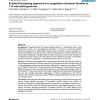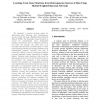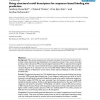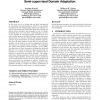43 search results - page 4 / 9 » Automatic prediction of protein domains from sequence inform... |
BMCBI
2004
13 years 7 months ago
2004
Background: Grouping proteins into sequence-based clusters is a fundamental step in many bioinformatic analyses (e.g., homology-based prediction of structure or function). Standar...
CSB
2005
IEEE
14 years 1 months ago
2005
IEEE
We developed a machine learning system for determining gene functions from heterogeneous sources of data sets using a Weighted Naive Bayesian Network (WNB). The knowledge of gene ...
BMCBI
2007
13 years 7 months ago
2007
Background: Many protein sequences are still poorly annotated. Functional characterization of a protein is often improved by the identification of its interaction partners. Here, ...
BMCBI
2010
13 years 7 months ago
2010
Background: Biological networks offer us a new way to investigate the interactions among different components and address the biological system as a whole. In this paper, a revers...
CIKM
2008
Springer
13 years 9 months ago
2008
Springer
In this work we try to bridge the gap often encountered by researchers who find themselves with few or no labeled examples from their desired target domain, yet still have access ...




